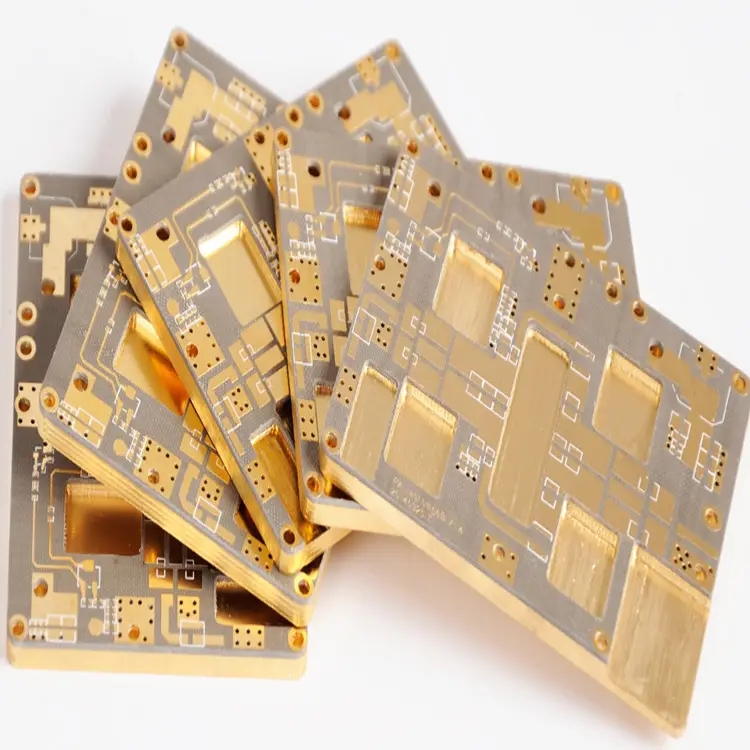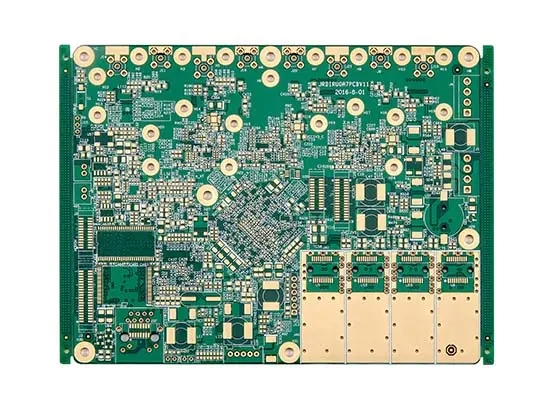

High Frequency Circuit Board: analysis of vehICle mounted millimeter wave radar
circuit board manufacturing, circuit board design, PCBA processing manufacturers explain high-frequency circuit boards to you: analysis of vehicle mounted millimeter wave radar
With the increasing popularity of automobiles and the vigorous development of AI, the degree of automobile intelligence is constantly improving, as well as the safety and comfort of driving; Millimeter wave radar is widely used because of its high detection accuracy, SMAll hardware size, and not affected by weather environment. More and more vehicles use one or more millimeter wave radars to assist the driver in driving operations, so as to improve driving comfort and safety and avoid traffic accidents. Now let's talk about it with the small editor of the PCB high-frequency Circuit board factory!
PCB high-frequency circuit board factory will understand the working principle of vehicle mounted millimeter wave radar with you
The vehicle mounted millimeter wave radar transmits frequency modulated continuous wave (FMCW) through the antenna, and the echo reflected by the target is received by the radar antenna. There is a time difference between the echo and the transmitted wave. The distance of the target can be calculated using this time difference. By analyzing the frequency difference between the transmitted signal and the reflected signal through the digital signal processor (DSP) at the back end, the moving speed of the target relative to the vehicle can be measured based on the Doppler principle. Further, through the processing of multiple antennas, multiple transmissions and multiple receivers and related algorithms, the range, speed and angle tracking of multiple targets can be realized.
Application of vehicle mounted millimeter wave radar
Vehicle mounted millimeter wave radar has different classification methods according to different classification methods. You usually hear that there are three ways to divide the installation frequency, detection distance, and main functions.
1) Divide according to the working frequency of radar; It can be mainly divided into two categories: 24GHz radar and 77GHz radar. Due to the limitations of 24GHz radar in bandwidth and scope of use, and the advantages of 77GHz radar such as high bandwidth, high accuracy and small size, more and more countries have divided the 77GHz frequency band into vehicular millimeter wave radar for use, so 77GHz radar will replace 24GHz radar in the future.
2) According to the detection range of radar, it can be divided into long range radar (LRR), medium range radar (MRR) and short range radar (SRR); They can be used in different scenarios to achieve different functions, or they can be used in combination, or in conjunction with the ADAS system to achieve multi-sensor fusion.

3) According to radar function division, radars of different applications can be distinguished, which is SIMple and easy to understand. The main common function radars include: BSD (Blind Spot Detection), AEB (Automatic Emergency Braking), FCW (Forward Collison WARMing), ACC (Adaptive Cruise Control); This paper focuses on different application radars with different functions, and introduces the vehicle mounted millimeter wave radars with different functions. The following content will introduce the vehicle mounted radar with these four functions in detail.
BSD (Blind Spot Detection)
The millimeter wave radar is used to detect overtaking vehicles in the blind area of the rear-view mirrors on both sides to rEMInd drivers and avoid accidents caused by the blind area of the rear-view mirrors during lane change.
When it comes to blind spot detection system, how is blind spot caused? When you drive a car, every part of the car that is not glass will cause blind spots. This means that vehicles with large window pillars have large blind spots, vehicles with small rear windows have large blind spots, and goods and passengers in the vehicle will also cause additional blind spots. Another kind of blind spot that people generally pay attention to exists in the space between the driver's peripheral vision and the rear view mirror transmission area. This type of blind spot can cover the entire vehicle, which is why it is very dangerous to change lanes without looking left and right. The function of BSD is to help drivers solve this very dangerous driving pain point. When the Blind Spot Detection System (BSD) detects that vehicles, pedestrians or large objects enter the blind spot area, it can warn the driver in various ways. Some systems use an audible alarm, and some systems display a warning in the corner of the rearview mirror.
AEB (Automatic Emergency Braking)
It is an active safety technology for automobiles. It uses millimeter wave radar (or other sensors) to detect the distance of vehicles or obstacles in front of it. When it rains at a safe distance, it actively intervenes to brake vehicles to ensure vehicle safety.
In drivers' daily driving, rear end collision is the most common one. Many accidents are caused by late braking or insufficient braking force. There are several main reasons, driver analysis or inattention; Poor visibility; Difficult to predict due to unexpected braking of the driver ahead or sudden crossing of the street by pedestrians. Most drivers are not used to dealing with this emergency, and do not have enough braking time or apply enough braking force, or even have no time to react. AEB is used to solve this pain point. It is characterized by that the system acts independently of the driver and will only intervene in critical situations to avoid or mitigate accidents through emergency braking.
The AEB system usually prompts the driver to take action to avoid accidents through warning. If the driver does not take any measures and there is still a risk of collision, the system will automatically brake to reduce the speed or stop the vehicle, so as to avoid accidents.
FCW (Forward Collision Warning)
The millimeter wave radar is used to detect the vehicles or obstacles in front of the vehicle. The system judges whether there is a collision risk by the distance of the objects in front and the speed of the vehicle. If there is a collision risk, the driver will be prompted to take appropriate measures by voice or vision. If the vehicle in front suddenly stops or decelerates while driving, the forward collision warning system will prompt people to react earlier and faster. It can significantly reduce the occurrence of collision accidents.
ACC (Adaptive Cruise Control)
It is an intelligent cruise driving control system, which can automatically accelerate and decelerate, so as to keep the vehicles ahead synchronized. The driver can set the maximum speed, and then the radar sensor can see the traffic conditions ahead, lock the vehicles in the lane, and the driver can set the following distance within a reasonable range. ACC usually works with FCW to alert some emergencies.
In a word, the vehicle mounted millimeter wave radar has a variety of functions and applications, which will be an important sensing means in the development of intelligent driving in the future. The technical integration of multi-function radar and multiple sensors is the only way to achieve unmanned driving. circuit board manufacturing, circuit board design, PCBA processing manufacturers explain high-frequency circuit boards for you: analysis of vehicle mounted millimeter wave radar.
然后
聯(lián)系
電話熱線
13410863085Q Q

微信

- 郵箱










